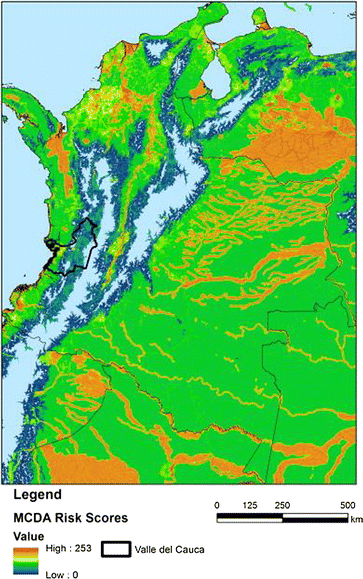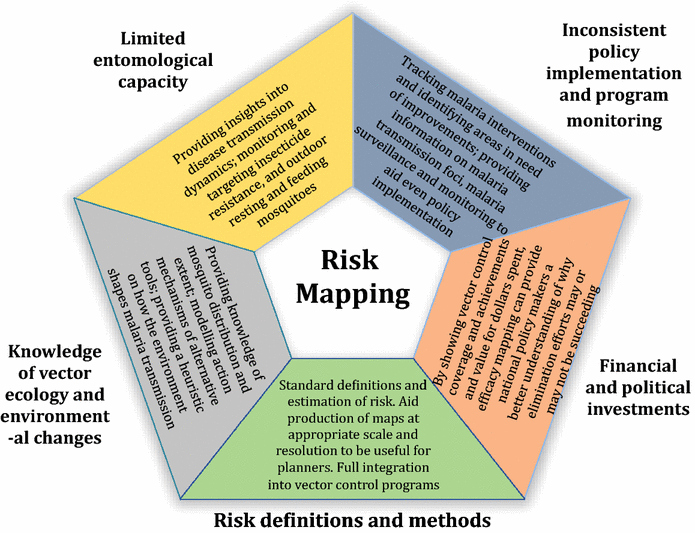Prospects and recommendations for risk mapping to improve strategies for effective malaria vector control interventions in Latin America
- PMID: 26694047
- PMCID: PMC4689006
- DOI: 10.1186/s12936-015-1052-1
Prospects and recommendations for risk mapping to improve strategies for effective malaria vector control interventions in Latin America
Abstract
With malaria control in Latin America firmly established in most countries and a growing number of these countries in the pre-elimination phase, malaria elimination appears feasible. A review of the literature indicates that malaria elimination in this region will be difficult without locally tailored strategies for vector control, which depend on more research on vector ecology, genetics and behavioural responses to environmental changes, such as those caused by land cover alterations, and human population movements. An essential way to bridge the knowledge gap and improve vector control is through risk mapping. Malaria risk maps based on statistical and knowledge-based modelling can elucidate the links between environmental factors and malaria vectors, explain interactions between environmental changes and vector dynamics, and provide a heuristic to demonstrate how the environment shapes malaria transmission. To increase the utility of risk mapping in guiding vector control activities, definitions of malaria risk for mapping purposes must be standardized. The maps must also possess appropriate scale and resolution in order to become essential tools in integrated vector management (IVM), so that planners can target areas in greatest need of control measures. Fully integrating risk mapping into vector control programmes will make interventions more evidence-based, making malaria elimination more attainable.
Figures


References
-
- WHO . World malaria report. Geneva: World Health Organization; 2013.
-
- WHO . World malaria report. Geneva: World Health Organization; 2014.
-
- Dicker R, Coronado F, Koo D, Gibson Parrish R. Principles of epidemiology in public health practice. 3rd Ed. Annapolis, MD: Public Health Foundation, 2006. pp. 512.
-
- Partnership Roll Back Malaria. Global Malaria Action Plan for a malaria free world. Geneva: World Health Organization; 2008.
-
- Pan American Health Organization. Programa Regional de Acción y Demostración de Alternativas Sostenibles para el Control de Vectores de la Malaria sin Uso de DDT en México y América Central, Mexico. Washington, 2006.
Publication types
MeSH terms
Grants and funding
LinkOut - more resources
Full Text Sources
Other Literature Sources
Medical
Miscellaneous

